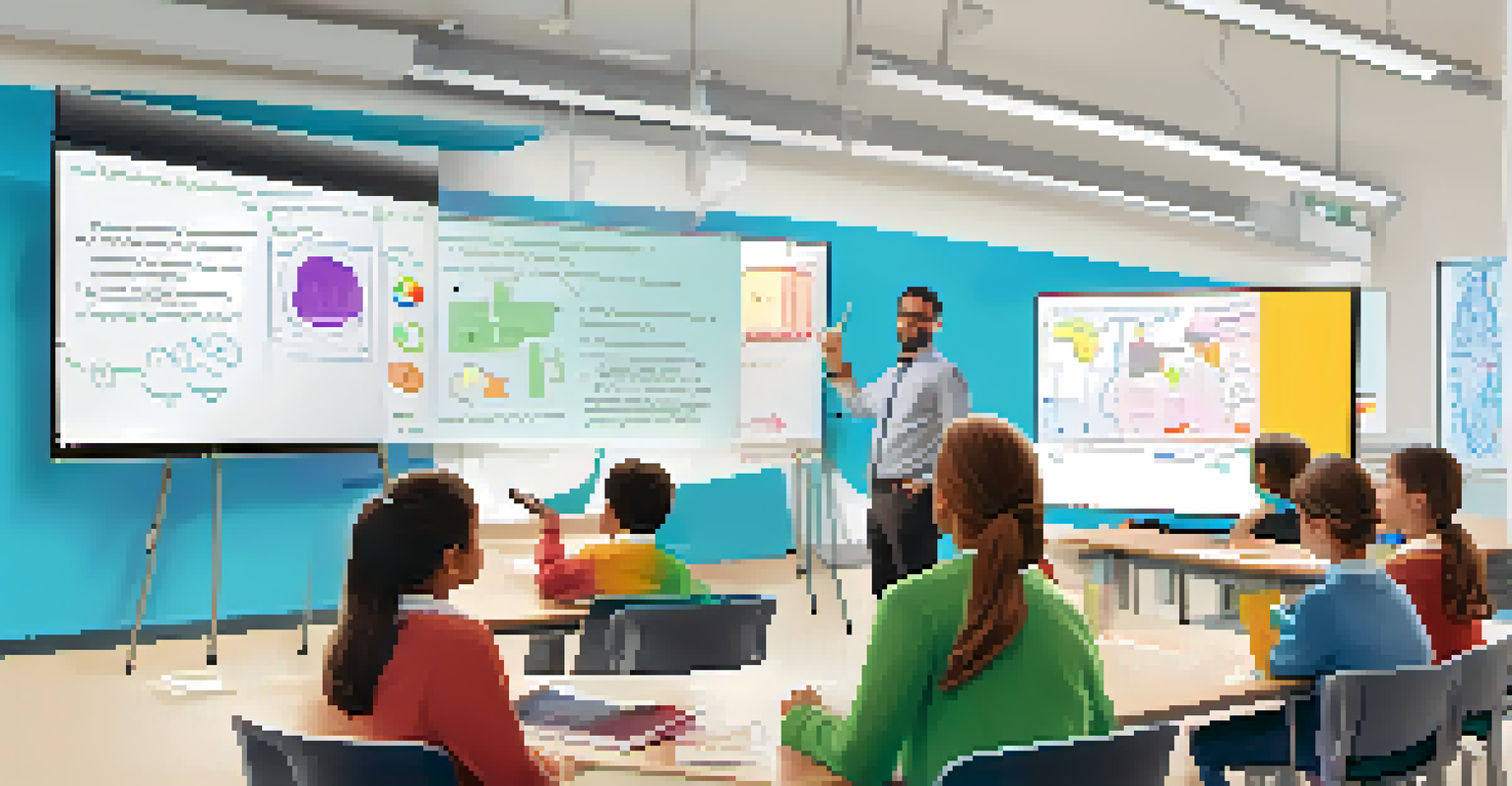Creating a Curriculum that Supports Learning Pathways

Understanding Learning Pathways and Their Importance
Learning pathways are structured routes that guide students through their educational journey. They help learners understand what skills and knowledge they need to acquire at each step. By mapping out these pathways, educators can create a more coherent and purposeful curriculum.
Education is not the filling of a pail, but the lighting of a fire.
When students have clear learning pathways, they are more likely to stay engaged and motivated. It's akin to following a treasure map; the clearer the directions, the easier it is to reach the destination. This clarity can significantly enhance the overall learning experience.
Moreover, well-defined pathways allow for personalized learning. Each student can progress at their own pace, ensuring that they grasp foundational concepts before moving on to more complex topics. This approach not only supports diverse learning styles but also boosts confidence.
Key Components of an Effective Curriculum Design
An effective curriculum design is built on several foundational components. These include clear learning objectives, relevant content, and assessment strategies. Each of these elements plays a crucial role in guiding students along their learning pathways.

For instance, setting specific learning objectives helps clarify what students should achieve at each stage. This focus allows educators to tailor their teaching methods to better meet student needs. Similarly, incorporating relevant content ensures that learners see the practical application of their studies.
Learning Pathways Enhance Education
Structured learning pathways guide students through their educational journey, improving engagement and motivation.
Assessment strategies are equally important, as they provide feedback on student progress. Regular assessments help identify areas where students may struggle, allowing educators to adjust their teaching approaches accordingly. This responsiveness is key to fostering a supportive learning environment.
Incorporating Flexibility into Curriculum Development
Flexibility is essential in curriculum development, as it allows for adaptation to the diverse needs of learners. This means being open to modifying content, pacing, and assessment methods based on student feedback and performance. Such adaptability helps maintain student engagement and ensures that learning remains relevant.
Tell me and I forget. Teach me and I remember. Involve me and I learn.
For example, if a particular topic proves challenging for students, educators can choose to spend additional time on it. Similarly, if students grasp concepts quickly, the curriculum can be accelerated to keep them challenged. This dynamic approach promotes a more personalized learning experience.
Moreover, flexibility encourages innovation in teaching methods. Educators can experiment with new technologies, collaborative projects, or real-world applications to keep learning fresh and exciting. This not only enhances the curriculum but also prepares students for the ever-changing world.
Engaging Students Through Collaborative Learning
Collaborative learning is a powerful strategy that can enhance student engagement and understanding. By working together on projects or problem-solving tasks, students can share diverse perspectives and learn from one another. This interaction fosters a sense of community and belonging in the classroom.
For example, group projects can encourage students to take on various roles, helping them develop teamwork and communication skills. These experiences not only deepen their understanding of the subject matter but also prepare them for future collaborative endeavors in the workplace. It's like a mini-society where everyone has a part to play.
Flexibility Supports Diverse Needs
Adapting curriculum content and pacing based on student feedback fosters a personalized learning experience.
Additionally, collaborative learning can help students develop critical thinking skills. Engaging in discussions and debates encourages them to articulate their thoughts and challenge each other's ideas. This process not only enhances comprehension but also nurtures a culture of curiosity and inquiry.
Utilizing Technology to Enhance Learning Pathways
In today's digital age, technology plays a pivotal role in shaping learning pathways. It offers a plethora of tools and resources that can enrich the educational experience. From interactive learning platforms to educational apps, technology can make learning more engaging and accessible.
For instance, online resources allow students to explore topics at their own pace, diving deeper into areas of interest. This self-directed learning empowers students to take charge of their education. Additionally, technology can facilitate real-time feedback through quizzes and assessments, helping students track their progress.
Moreover, technology can bridge gaps for students with different learning needs. Tools like screen readers or speech-to-text software can support those with disabilities, ensuring that everyone has the opportunity to succeed. This inclusivity is essential for developing a truly supportive learning environment.
Assessing and Adjusting the Curriculum Over Time
Curriculum development is not a one-time event; it requires ongoing assessment and adjustment. Regularly evaluating the effectiveness of teaching strategies and learning outcomes is crucial for maintaining a high-quality curriculum. This iterative process helps ensure that the curriculum remains relevant and effective.
For example, gathering feedback from students can provide valuable insights into what works and what doesn't. Surveys, focus groups, and informal discussions can help educators identify areas for improvement. This feedback loop fosters a culture of continuous improvement, benefiting both students and teachers.
Technology Enriches Learning
Utilizing technology in education provides interactive tools that enhance accessibility and support diverse learning styles.
Moreover, staying informed about educational trends and research can guide curriculum adjustments. Educators should actively seek out best practices and innovative strategies to implement. By embracing change, they can create a dynamic learning environment that adapts to the needs of their students.
Promoting Lifelong Learning Through Curriculum Design
One of the ultimate goals of any curriculum is to promote lifelong learning. By instilling a love for learning in students, educators can equip them with the skills to adapt and thrive in an ever-changing world. This mindset is crucial for personal and professional growth.
To foster lifelong learning, curricula should encourage curiosity and exploration. Providing opportunities for independent projects or self-directed study allows students to pursue their interests. This approach not only enhances engagement but also cultivates a sense of ownership over their learning journey.

Additionally, integrating real-world applications into the curriculum can reinforce the value of continuous learning. When students see how their education relates to their lives and future careers, they are more likely to embrace learning as a lifelong pursuit. Ultimately, a well-designed curriculum can inspire students to become curious, self-motivated learners.